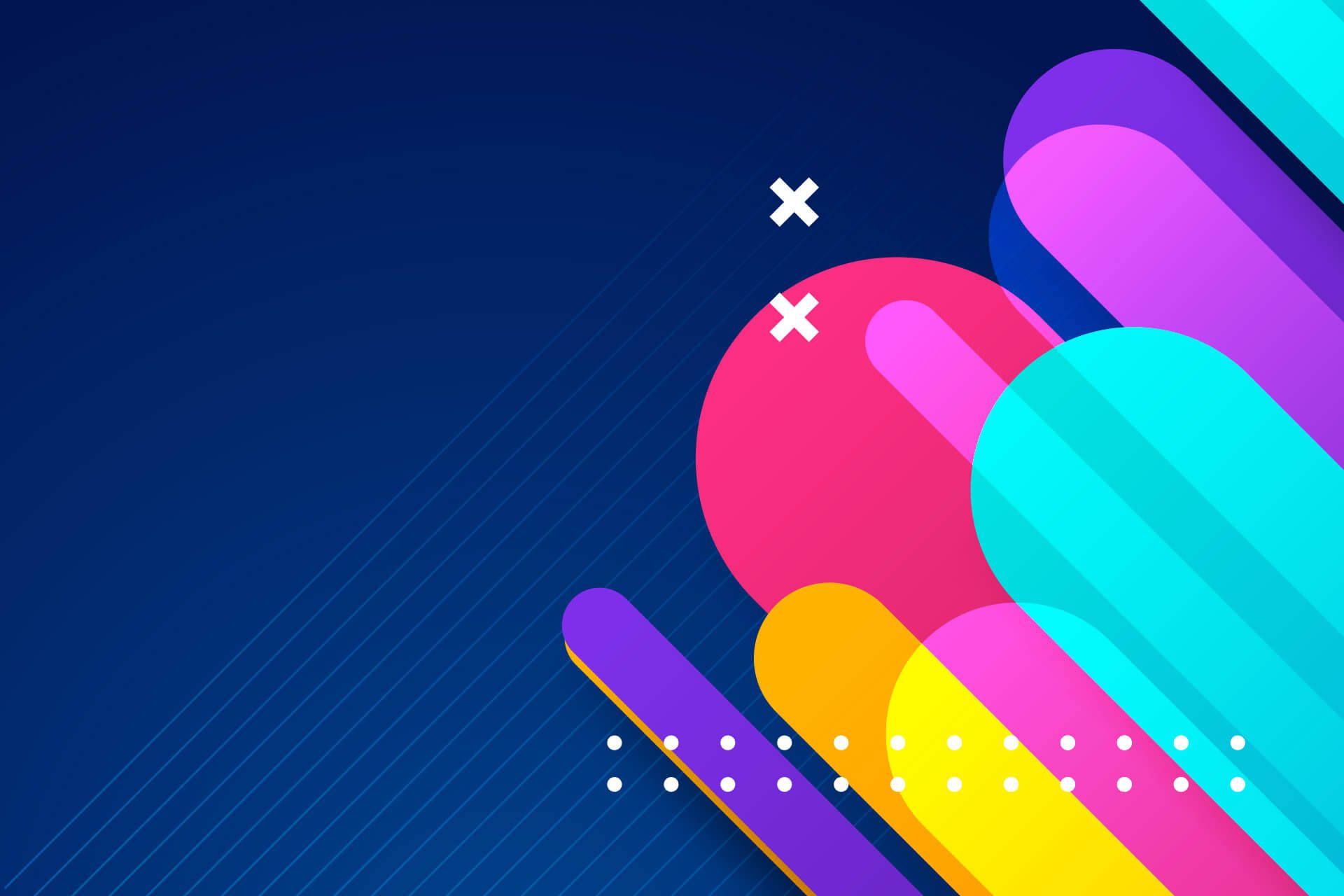
Article
Top Trends in Web Design for 2024
PUBLISHED:May 23, 2023
UPDATED:January 4, 2024
Website design is no less creative than print design, interior design or even painting a portrait. And just like a portrait, your website design directly reflects your brand and who you are.
It’s estimated that more than 59% of internet users prefer to visit beautiful, well-designed web pages over basic ones. So, if you own a website, you must put in the effort to make it as visually appealing as possible.
You must take care not to disrupt the user experience, after all, the primary purpose of the website is likely to drive sales and enquiries. But why not make it as visually attractive as you can in the meantime?
In this article, we’ll examine some of the top trends in web design in 2023. So, without further ado, let’s get started!
Top 10 Trends of 2023 in Web Design
Staying in touch with the latest web design trends and incorporating them into your website strategy is one way of staying relevant in an increasingly competitive marketplace. Below is a list of our top 10 web design trends of 2023 that can help you to up your digital marketing game:
1. Custom Illustrations
Using illustrations to bring your brand to life is a popular trend in modern website design. Instead of relying on generic stock images, professional agencies now opt for custom illustrations that perfectly reflect your brand’s uniqueness. These bespoke illustrations draw inspiration from a wide array of traditional art genres and print publishing, resulting in a truly distinctive visual identity for your website.
2. Full-page Headers
Nowadays, website headers have evolved beyond being mere lines of text placed at the top of a page. When you enlist the expertise of a professional web design agency, they will craft a truly impactful header that captivates visitors. This often entails strategically positioning vital text or a compelling call-to-action (CTA) button on the left, while complementing it with stunning images on the right.
This approach is grounded in understanding human behaviour, as research shows that users typically direct their attention to the top-left portion of a website initially. By incorporating quirky images, you can effectively draw attention to the CTA button and ensure it stands out prominently.
3. Parallax Scrolling
Parallax scrolling is a powerful technique that can greatly enhance the visual appeal of your website. By creating an illusion of depth and movement, it adds a dynamic and engaging element to the browsing experience.
As users scroll down the page, different layers of content move at varying speeds, creating a visually captivating effect. This technique allows you to tell a story, showcase products, or present information in a more interactive and memorable way.
With parallax scrolling, you can capture visitors’ attention, create a sense of immersion, and leave a lasting impression, ultimately making your website more visually stunning and compelling.
You can also use dynamic scrolling effects to play background videos and to trigger animations which can give your website a truly magical effect.
4. White Space
The strategic use of white space, also known as negative space, plays a crucial role in enhancing the user experience on web pages. By providing ample breathing room around the content, it allows for better readability, comprehension, and overall visual harmony.
White space helps to declutter the layout, making it easier for users to focus on the key elements and absorb information effortlessly. It creates a sense of organization and balance, improving the overall aesthetics of the page. Additionally, white space promotes a sense of elegance and sophistication, conveying a more refined and professional impression.
By incorporating white space effectively, you can create a pleasant and user-friendly browsing experience that encourages engagement and supports seamless navigation.
5. Custom Cursors
Incorporating a custom cursor into your website design can bring a delightful sense of fun and interactivity to the user experience. By deviating from the standard cursor, you have the opportunity to inject personality and creativity into your website.
A unique cursor design can capture users’ attention, pique their curiosity, and create a memorable impression. It adds an element of surprise and whimsy, inviting users to explore and engage with the content in a playful manner. Custom cursors can be tailored to match the overall theme or branding of a website, enhancing its visual coherence.
Ultimately, by incorporating custom cursor design, you can infuse a sense of enjoyment and entertainment into the browsing experience, making it more engaging and memorable for users. And to take things one step further, consider adding user-triggered animations, which happen when a user moves their cursor over a button or similar hot spot.
6. More focus on UX/UI
As businesses increasingly prioritize customer satisfaction, there arises a pressing demand for a heightened focus on UX/UI design. Your user experience must be meticulously organized, seamless, and captivating. Achieving these goals involves the following strategies:
- Optimizing web pages for fast loading.
- Reducing clutter on web pages.
- Crafting SEO-relevant content that is easily scannable by the human eye.
- Incorporating multimedia elements.
Web design agencies specializing in this field can seamlessly fuse functionality with a creative interface, resulting in a clean and streamlined website. To further enhance the user interface, designers can implement the following:
- Voice-controlled interfaces.
- Transcriptions for videos.
- Minimizing or eliminating distracting features or elements.
- Striking a well-balanced design for motion effects.
- Including captions for images.
7. Grid Design
Working to a grid is essential for creating a truly effective web design. A grid provides a structured framework that ensures consistency and harmony across different screen sizes and devices.
By establishing a grid system, designers can organize content, images, and other elements in a logical and balanced manner. This helps maintain visual order and prevents elements from becoming disorganized or disproportionate when viewed on various devices.
A responsive grid enables seamless resizing and repositioning of elements, allowing the website to adapt fluidly to different screen sizes without sacrificing usability or aesthetics. It also facilitates better alignment and spacing, enhancing the overall user experience and readability.
Working to a grid in responsive web design ensures that the website remains visually appealing, functional, and accessible across a wide range of devices and screen resolutions.
8. Full-screen Image or Video Headers
Full-screen image or video headers are an excellent way to captivate and engage website users. By utilizing the entire screens’ real estate, these visually immersive elements grab immediate attention and create a powerful visual impact.
Full-screen images or videos have the ability to evoke emotions, tell a story, or convey the essence of a brand in a compelling manner. They create a sense of immersion and draw users into the website experience, encouraging them to explore further. Just remember to include up to two CTA buttons to help guide your users’ journey throughout the website.
9. Impactful and Gripping Stories
OK, not technically a design trend, but real case studies and user stories hold significant importance as content for a website. They provide tangible evidence of the value and effectiveness of a product or service.
By showcasing real-life examples, potential customers can see how others have successfully utilized the offering and achieved desired outcomes.
The key is to bring these stories to life in an engaging way. This is where you can lean on video content and parallax scrolling mentioned above.
10. Colour Trends
Staying updated with colour trends is vital for achieving good web design. Colours play a fundamental role in shaping the overall aesthetics, mood, and user experience of a website.
By incorporating current colour trends, designers can create a modern and visually appealing interface that resonates with contemporary users. Following colour trends also ensures that the website remains relevant and aligned with current design standards, preventing it from appearing outdated or stale. For example, in 2023, aqua, a shade of blue, took the web designing world by storm and Pantone announced that a shade of vivid magenta was their colour of the year.
You will notice a lot of muted colour tones being used in 2023 as well as lots of gradients. Furthermore, it is crucial that your designer understands the psychology of colours, which will improve how your users interact with the content on your website and improve the overall user experience.
Conclusion
When talking about the top web design trends for 2023, fast, clean, eye-catching designs with illustrations and animated cursors are often the topic of conversation. To provide a fresh and attractive look to your site, they can all contribute equally, but should always be in balance with the brand and the overall UX of the website.
When considering the redesign of your website, it is important to find a professional web design agency that can help guide you towards the right solution. Be it a web design company in London, or a studio on the other side of the world offering affordable web design in Canberra, you need a team of creatives that will help you build the best website possible.
If you are interested in talking to us about refreshing your existing website or having a brand new website built for your new brand, feel free to get in touch. We’ll always be happy to discuss your needs.

